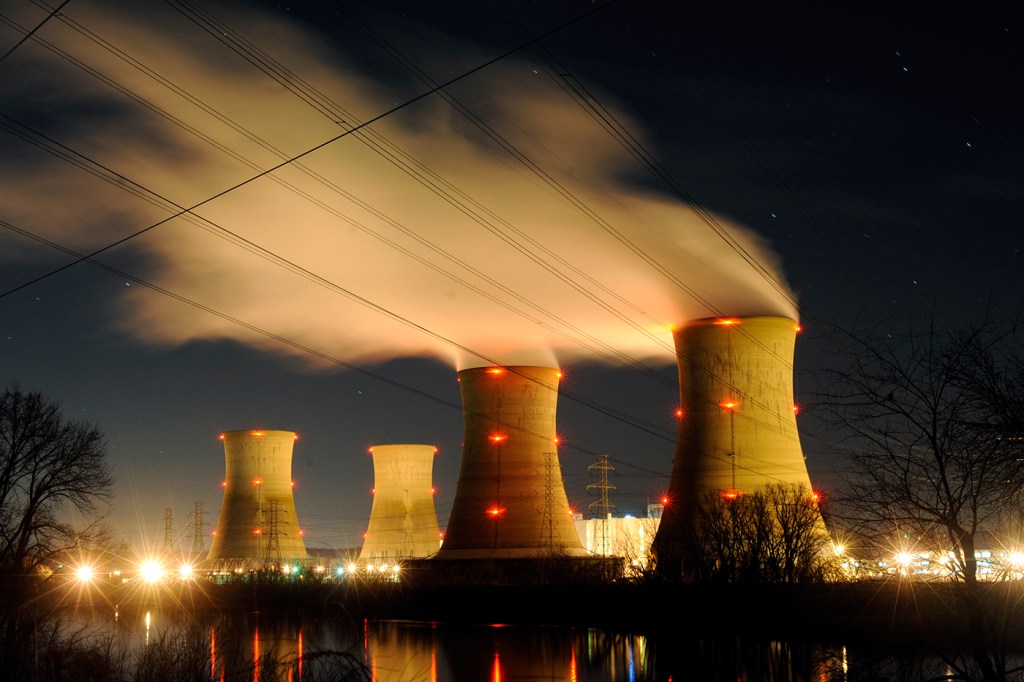Plan to reopen Three Mile Island plant could be ‘rebirth’ of nuclear energy, Northeastern experts say

The 1979 partial meltdown at the Three Mile Island nuclear power plant became a cautionary tale for a generation of Americans.
But experts at Northeastern University say a plan to reopen the plant shows opinions are changing regarding nuclear power and its role in a clean energy future.
“‘Nuclear’ has a really bad reputation as a word, but for use in our society, it is actually very convenient,” says Alessandra Di Credico, a teaching professor of physics at Northeastern University who teaches a course on energy and the environment.
Meanwhile, Stephen Flynn, a professor of political science and founding director of the Global Resilience Institute at Northeastern, says that the planned reopening is “probably a good thing.”
“We have to figure out how we up our game on the nuclear side as well as on other efforts around renewable energy if we’re going to transition from fossil fuels,” says Flynn, who recently led a National Academies committee reporting on the threat of nuclear terrorism. “Energy demand is going up, the grid system is becoming more fragile and the supply is diminishing. We have to look at a whole range of energy sources. Nuclear is clearly one of them.”
Constellation Energy and Microsoft announced on Sept. 20, that they had signed a 20-year power purchasing agreement that would bring one of the reactors at Three Mile Island back online to power the technology company’s data centers that help support artificial intelligence.
Recommissioning the Unit 1 reactor at Three Mile Island, which was shut down in 2019, requires the approval of the U.S. Nuclear Regulatory Commission. But if granted, the power plant is expected to return to operation in 2028.
The plan comes as the world undergoes a transition from fossil fuel-based energy to zero-emission and renewable energy sources, and comes as advancements in AI and cryptocurrency demand massive supplies of energy.
Featured Posts
Nuclear energy already provides 9% of the world’s power, but the usage varies significantly among countries. France’s grid is based on 70% nuclear energy and exports its power, for instance, while nuclear power plants are effectively banned in several countries in Europe, including in Di Credico’s homeland of Italy, although the country is reconsidering.
“It’s kind of silly because we buy their electricity, and would be affected by accidents,” Di Credico says, noting that radioactivity “doesn’t see international boundaries or check passports.”
“We are paying the price,” Di Credico says. “But we’re not really taking the benefits of nuclear energy.”
But the new Three Mile Island plan also evokes memories of the power plant’s 1979 partial meltdown — and the 1986 Chernobyl disaster, and the 2011 Fukushima Daiichi disaster.
“It was a horrific accident, I remember it,” Flynn says of the Three Mile Island partial meltdown. “But all energy sources have trade-offs associated with them, and I think we’re at the point where we should be evaluating the trade-offs associated with nuclear.”
Flynn also says that nuclear safety and nuclear technology in the United States has significantly improved since 1979. There are currently 54 nuclear power plants operating in the United States, according to the U.S. Energy Information Administration.
“The industry — particularly in the U.S. context — is managed in a very safe way,” Flynn says. “That’s not to say there are zero risks; but I think that risk is managed well in that sector.”
Di Credico concurs, noting she was once “in the trenches” of the anti-nuclear movement but has since had a change of opinion.
“You don’t wanna be close to a radioactive source for no reason,” Di Credico says. “It is a danger that is real.”
“But at the same time right now we are actually in a much better place than 30 years ago, 40 years ago,” Di Credico continues.
Also different from 40 years ago is the American energy portfolio.
Both Flynn and Di Credico say that solar and wind energy are important components of that portfolio, but both are also limited — whether by daylight or calm weather or battery needs or a lack of scale.
“We need to have a consistent, baseline source of energy that we can sell as something that can substitute for fossil fuels,” Di Credico says. “I cannot see that the expansion of solar and wind will fill the gap between what we need to eliminate — coal, gas, etc. — and what we need to live and these new uses.”
Might nuclear energy be that source?
“I’m actually very optimistic that we are going to see a rebirth of the nuclear energy option in the United States and in the world,” Di Credico says.











